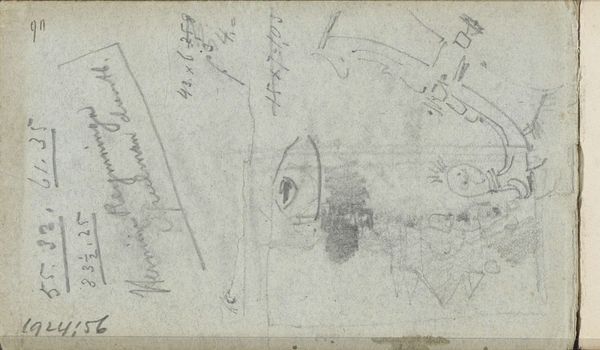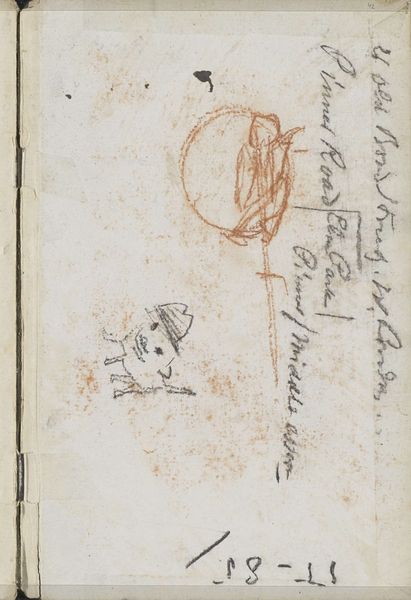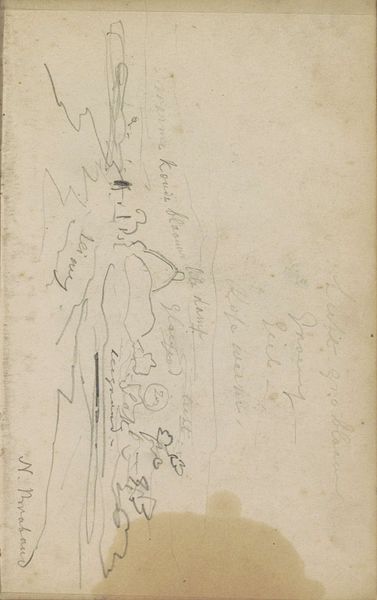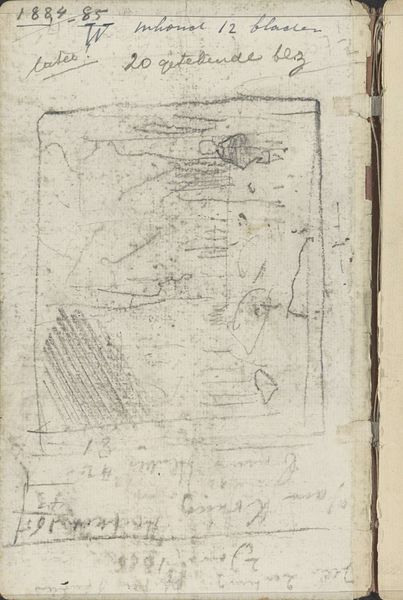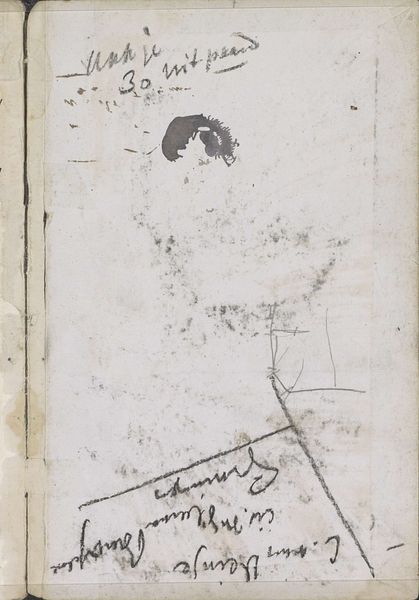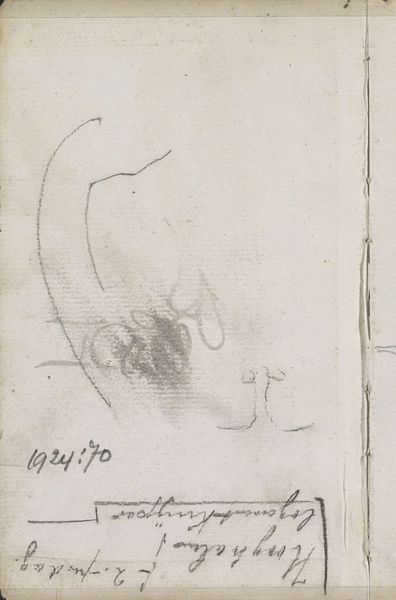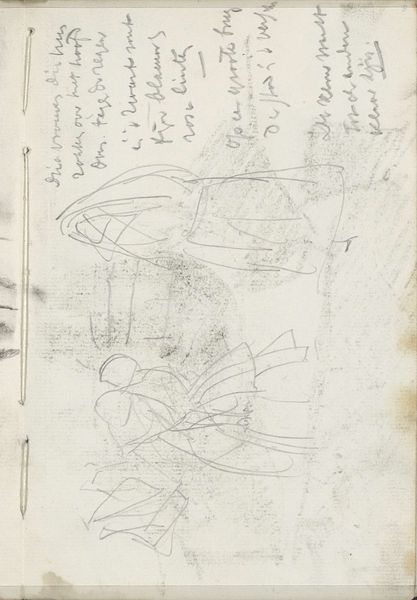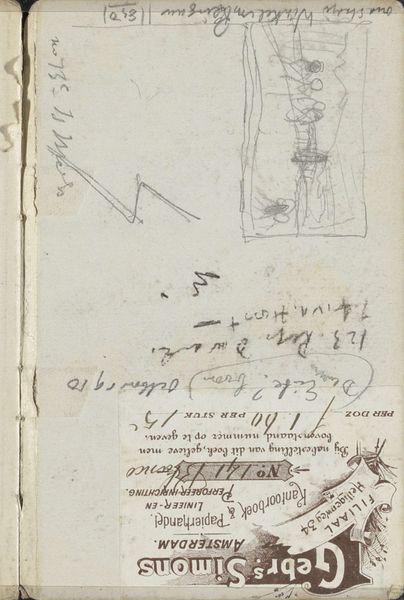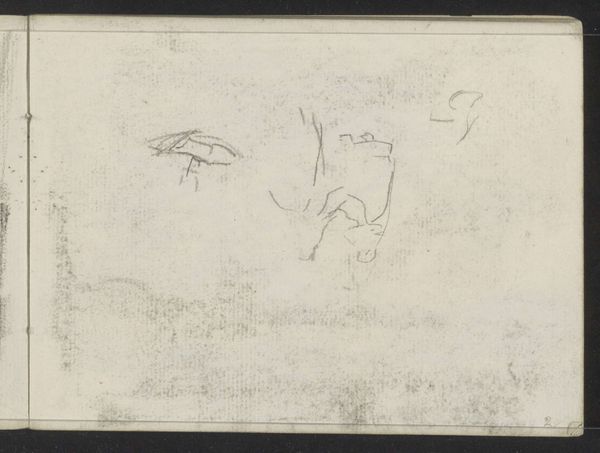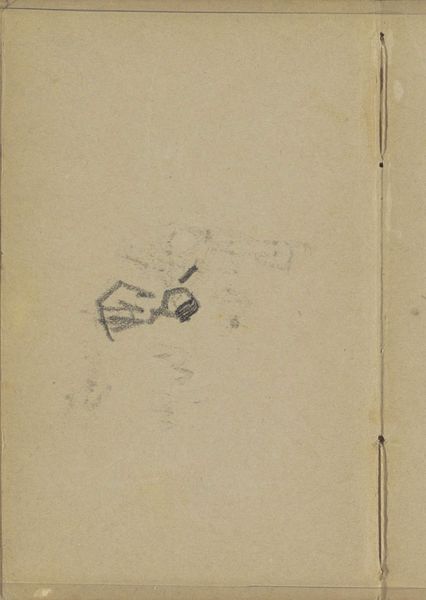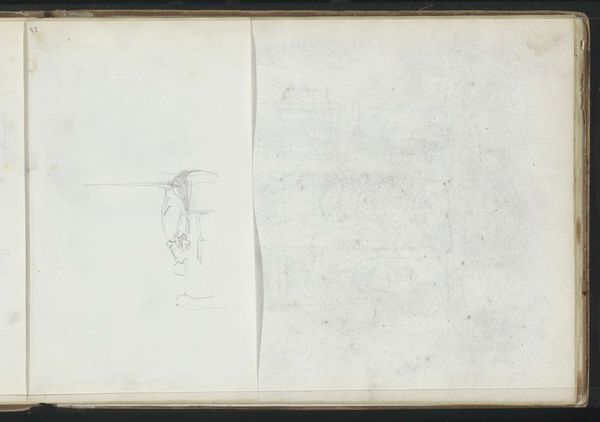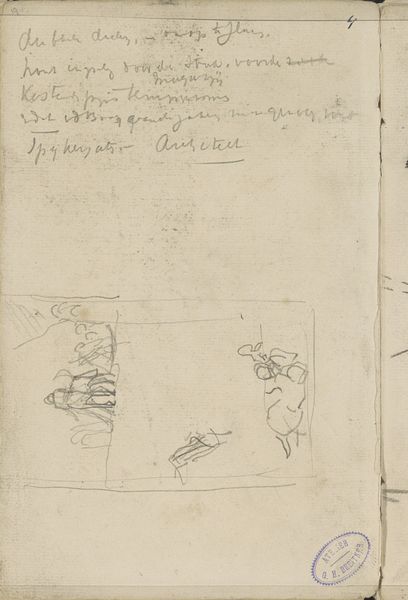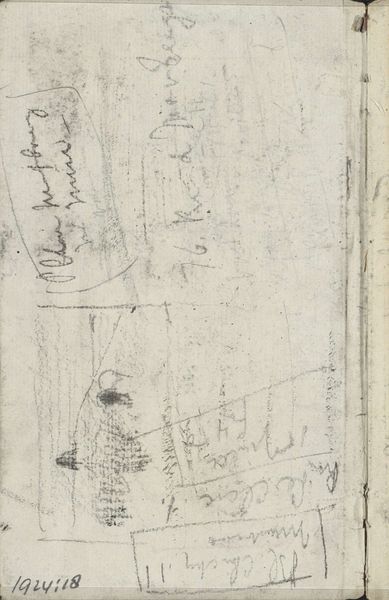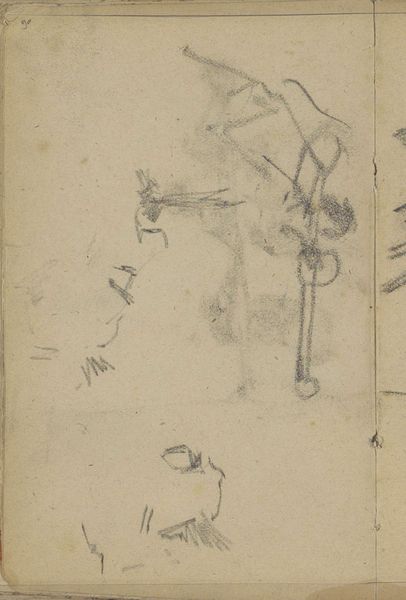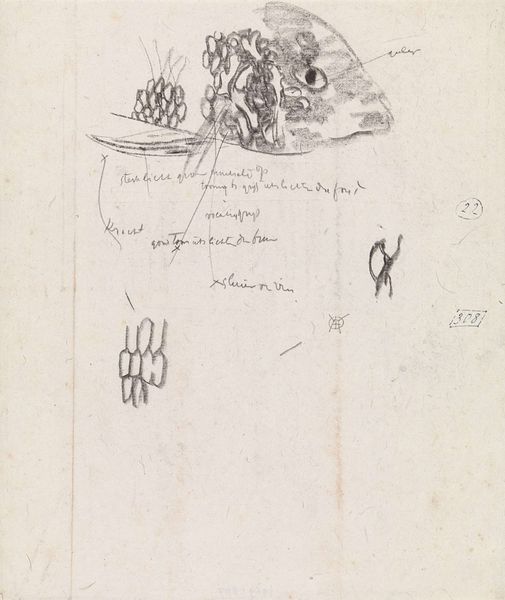
drawing, paper, graphite
#
drawing
#
aged paper
#
toned paper
#
impressionism
#
sketch book
#
hand drawn type
#
landscape
#
paper
#
form
#
personal sketchbook
#
sketchwork
#
pen-ink sketch
#
line
#
pen work
#
graphite
#
sketchbook drawing
#
sketchbook art
Copyright: Rijks Museum: Open Domain
Editor: This is "Studie, mogelijk van een wiel" – Study, possibly of a wheel – by George Hendrik Breitner, dating back to around 1883-1885. It's a drawing in graphite and pen and ink, on paper, part of the Rijksmuseum collection. It’s part of a sketchbook, it seems, and I am intrigued by the immediacy of it. What jumps out at you? Curator: Indeed. Consider the function of line here. Notice how Breitner uses the gestural quality of line to define the contours and volume, even without shading. The very ambiguity of the subject—the "wheel"—invites us to contemplate form itself. Observe also the contrast between the loose sketch and what appears to be some sort of inscription on the upper register. How do the textual elements influence your reading of the visual forms? Editor: I hadn't considered that, but the text seems separate, like it doesn't quite relate to the wheel itself. So you're saying the disconnection between the text and image is deliberate and should be considered? Curator: Precisely. It creates a formal tension, foregrounding the materiality of the page. The marks and smudges are not incidental but integral. They flatten the image and thus acknowledge the work as an object, as well as a representation of an object. The texture contributes just as significantly as line or form, inviting close observation and a sensitivity toward its physicality. Does considering the image in that way alter your initial assessment? Editor: Yes, absolutely! I was caught up in trying to decipher what it was, rather than seeing how it *is*. Seeing it as texture and line, rather than object, that's incredibly insightful. Thanks! Curator: And thank you for your careful looking. There’s a constant negotiation between the hand, the eye and the mind – the pleasure is to experience its trace.
Comments
No comments
Be the first to comment and join the conversation on the ultimate creative platform.
